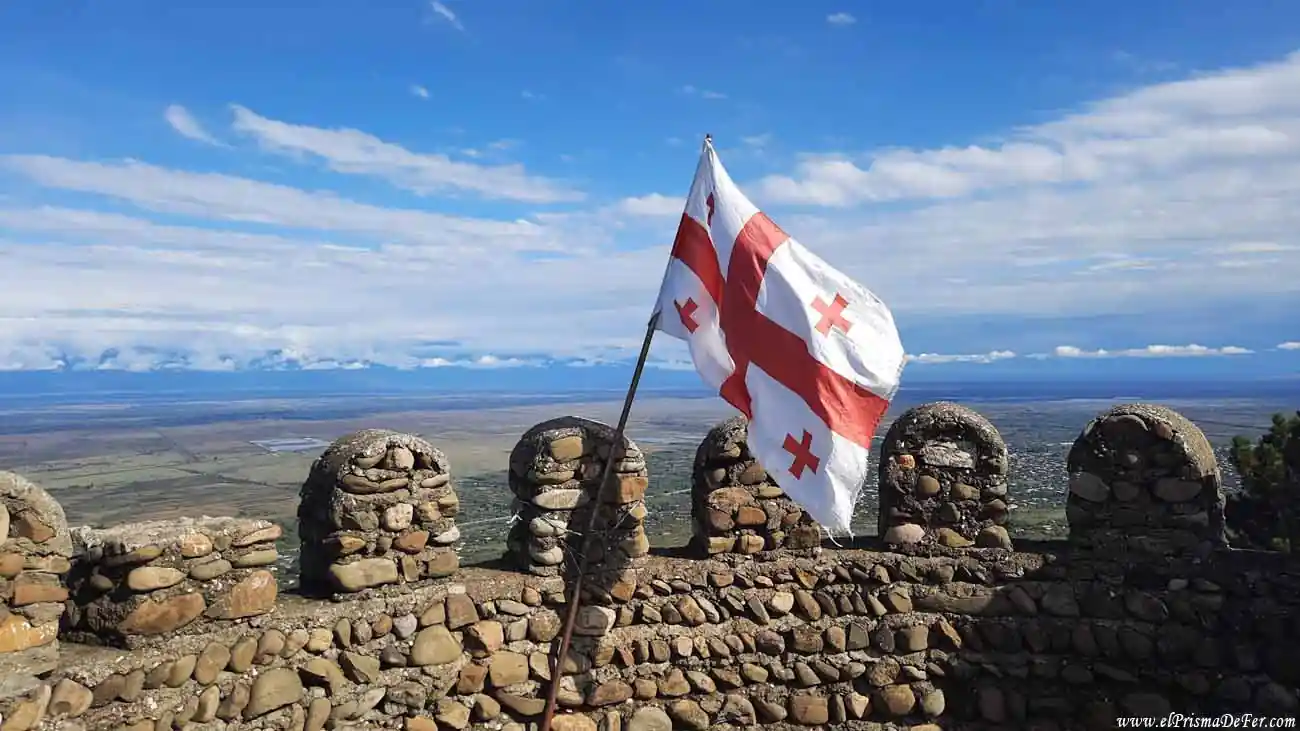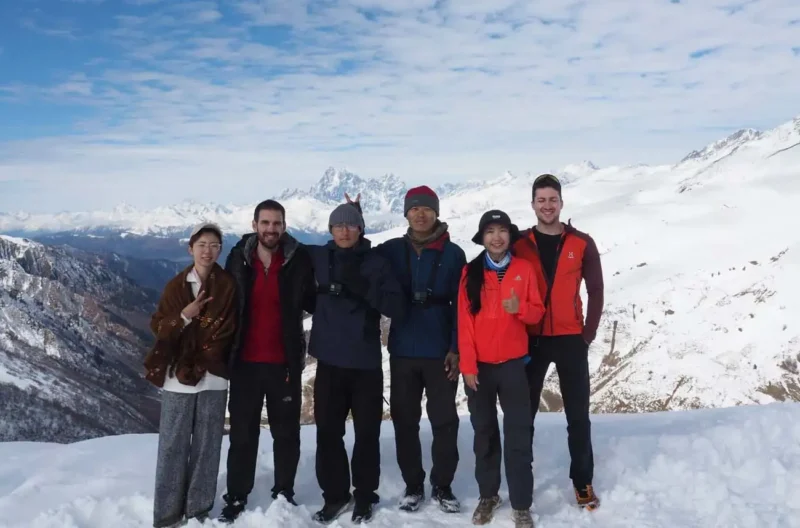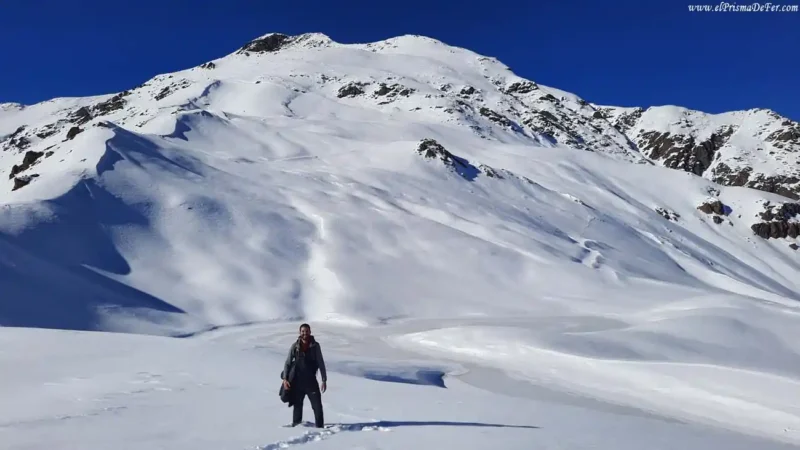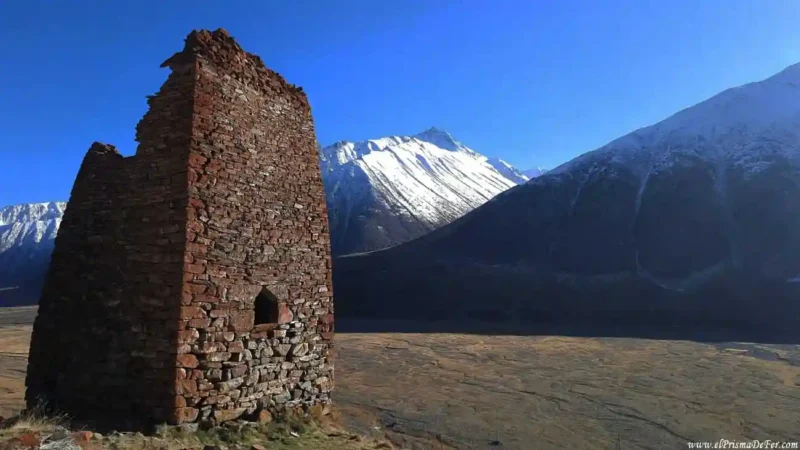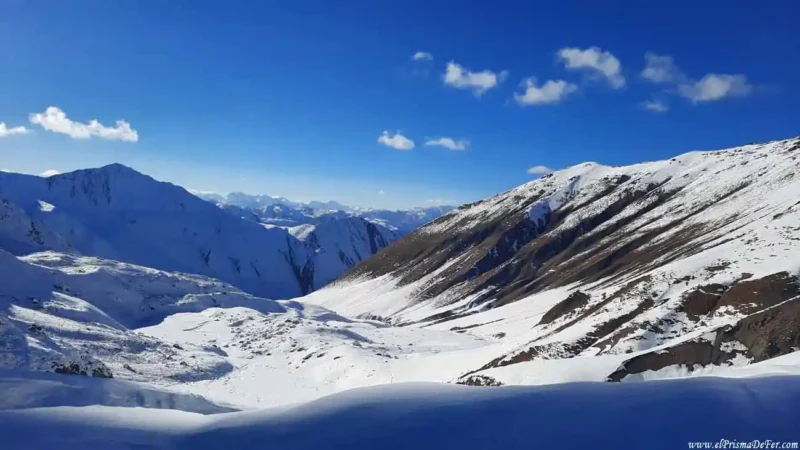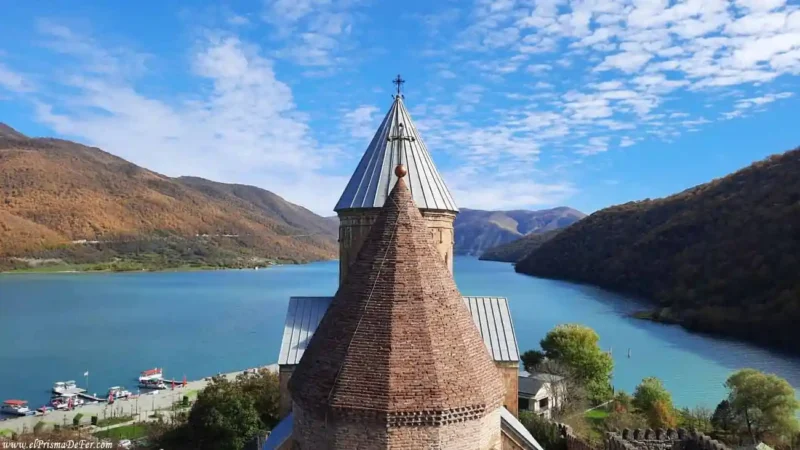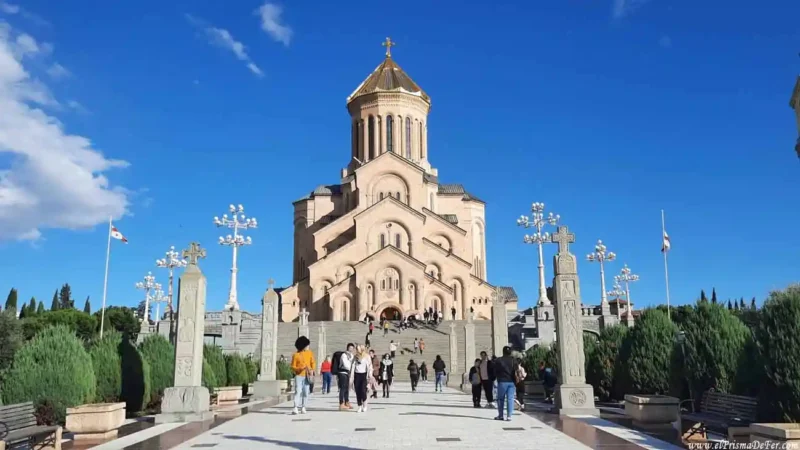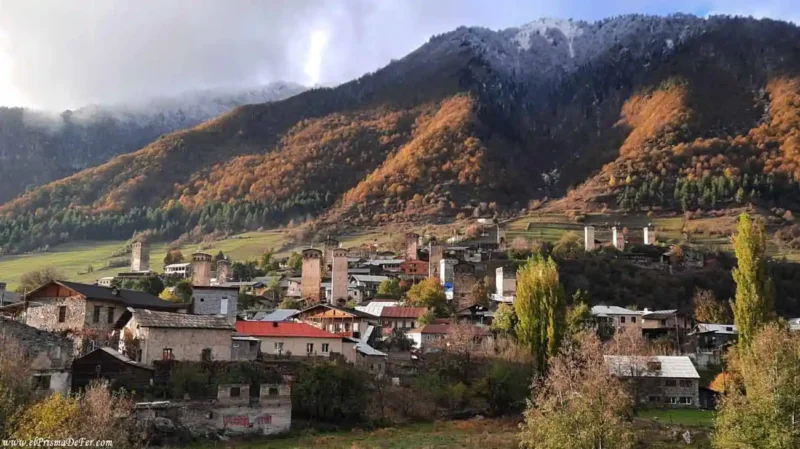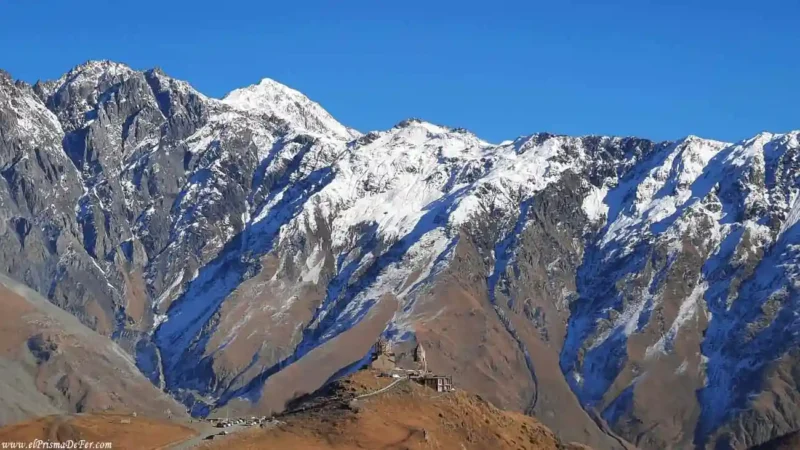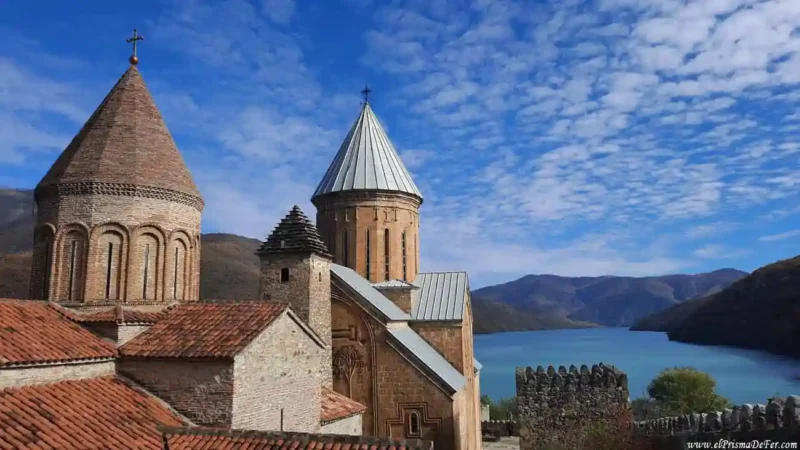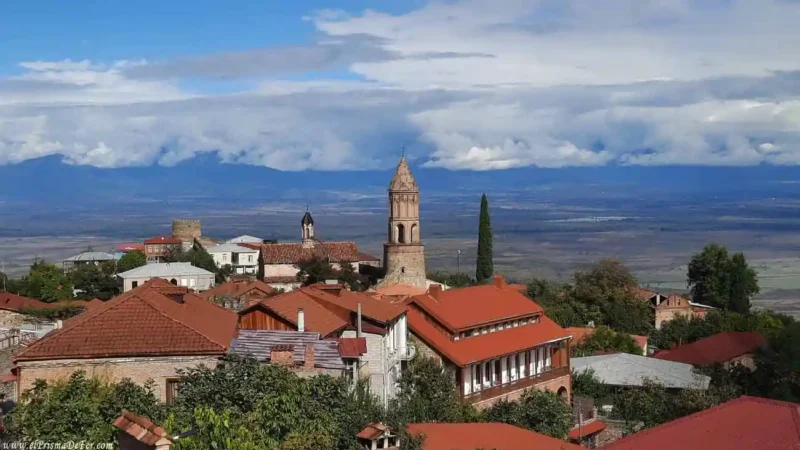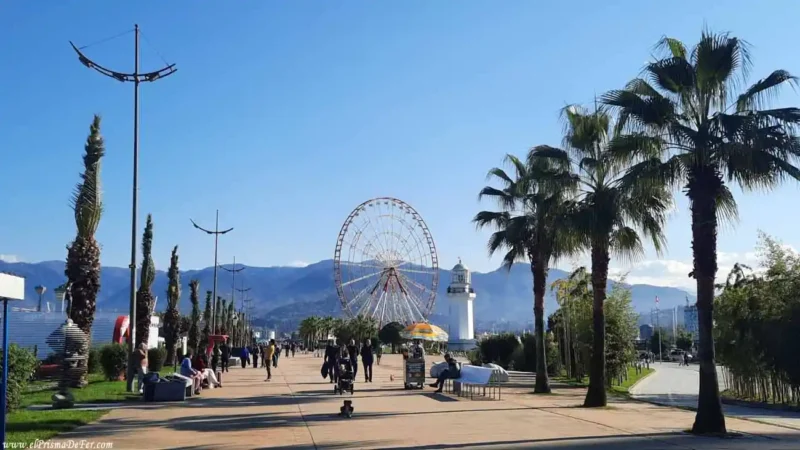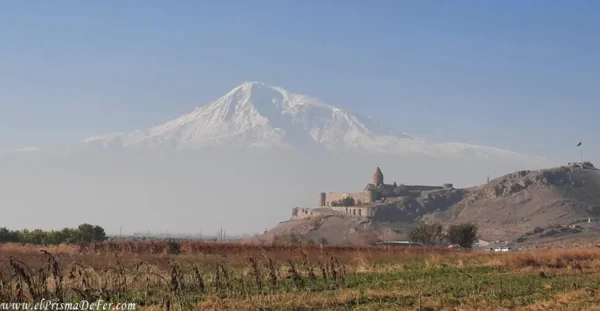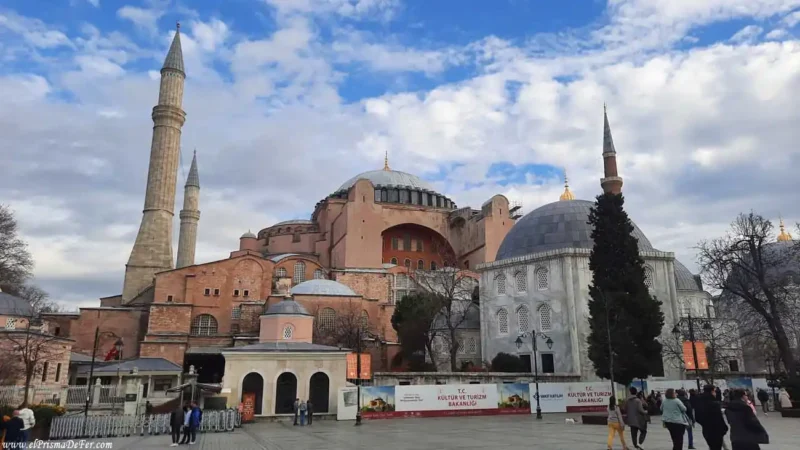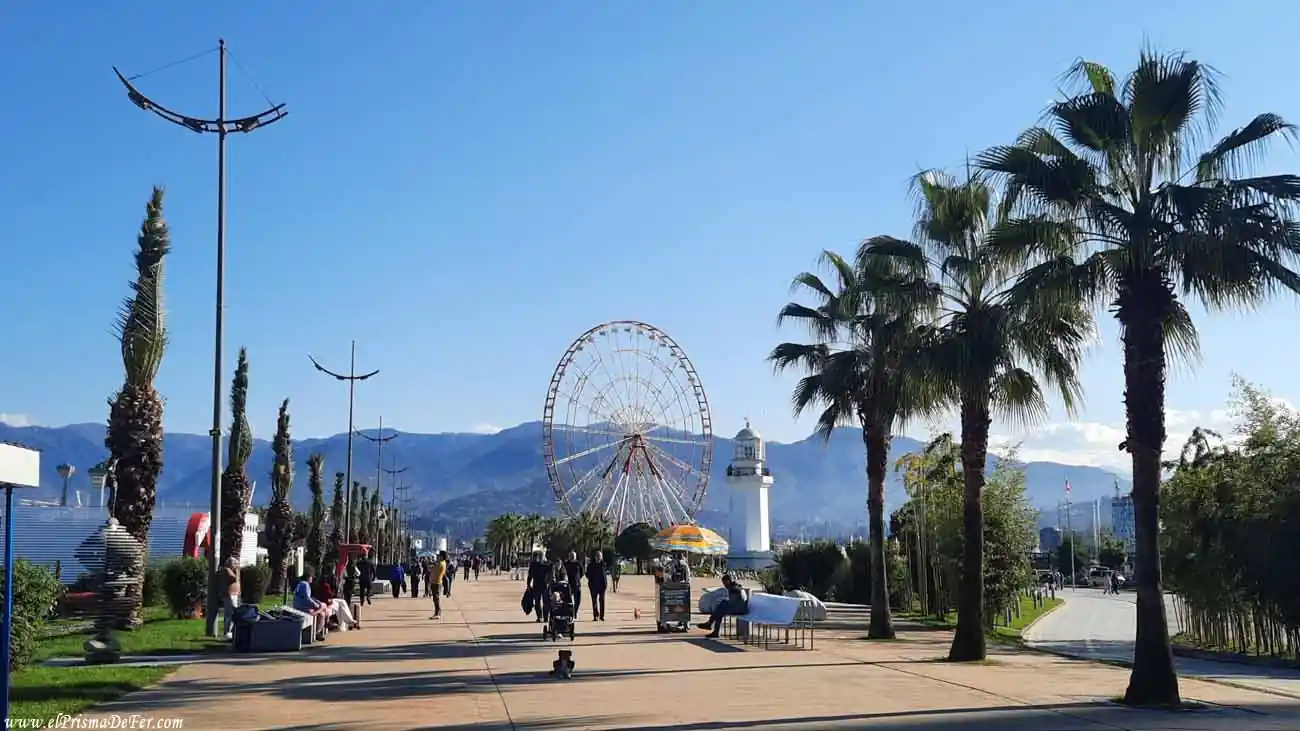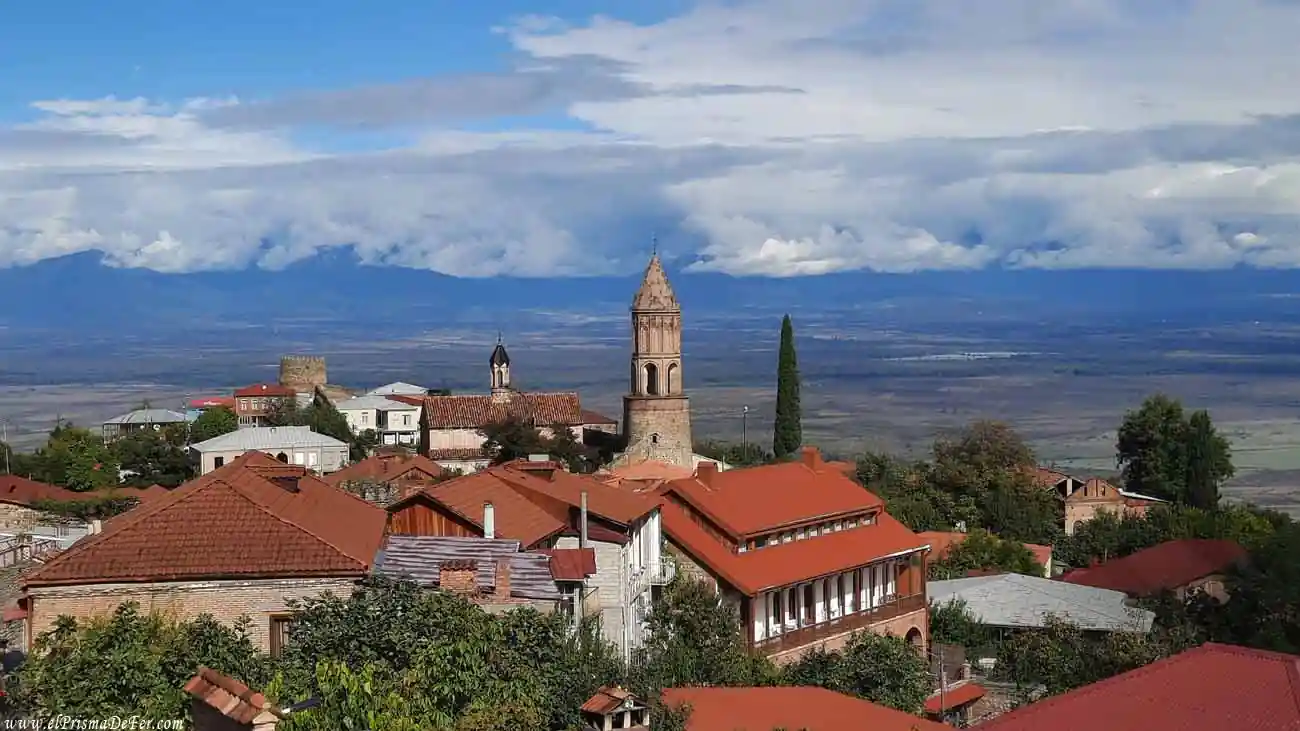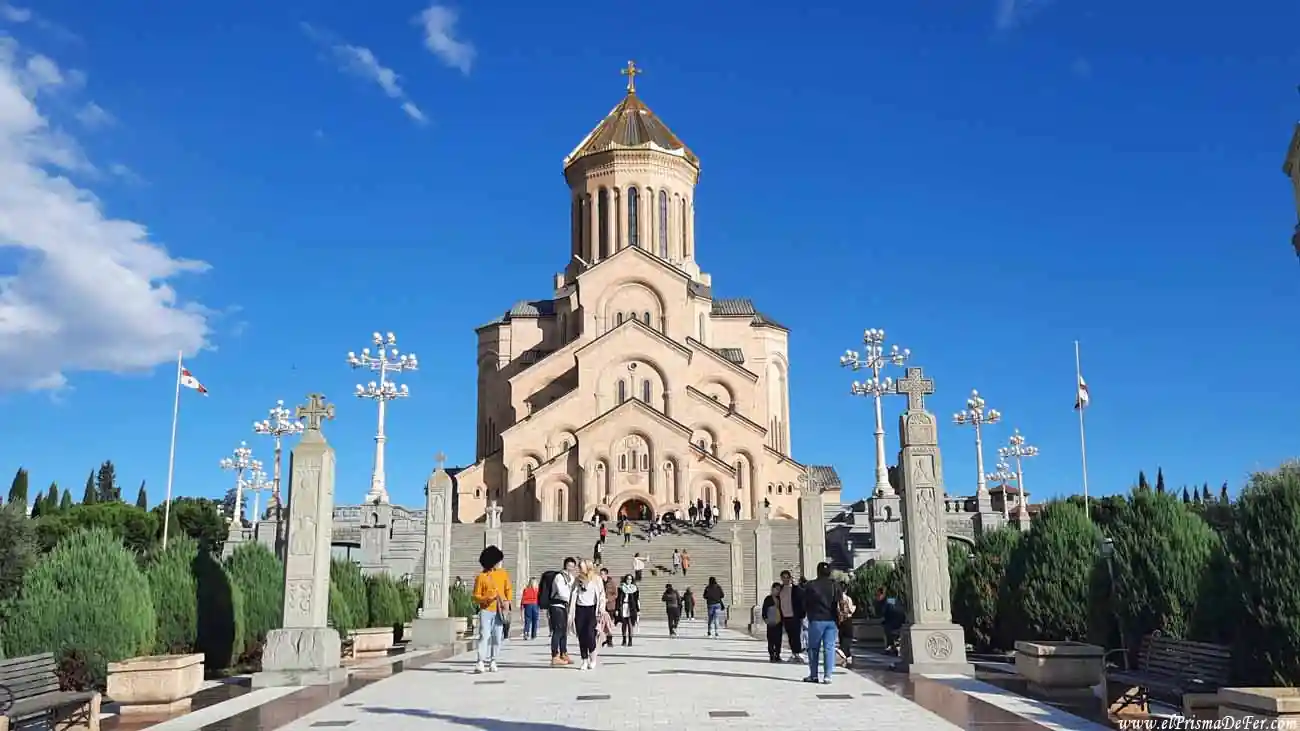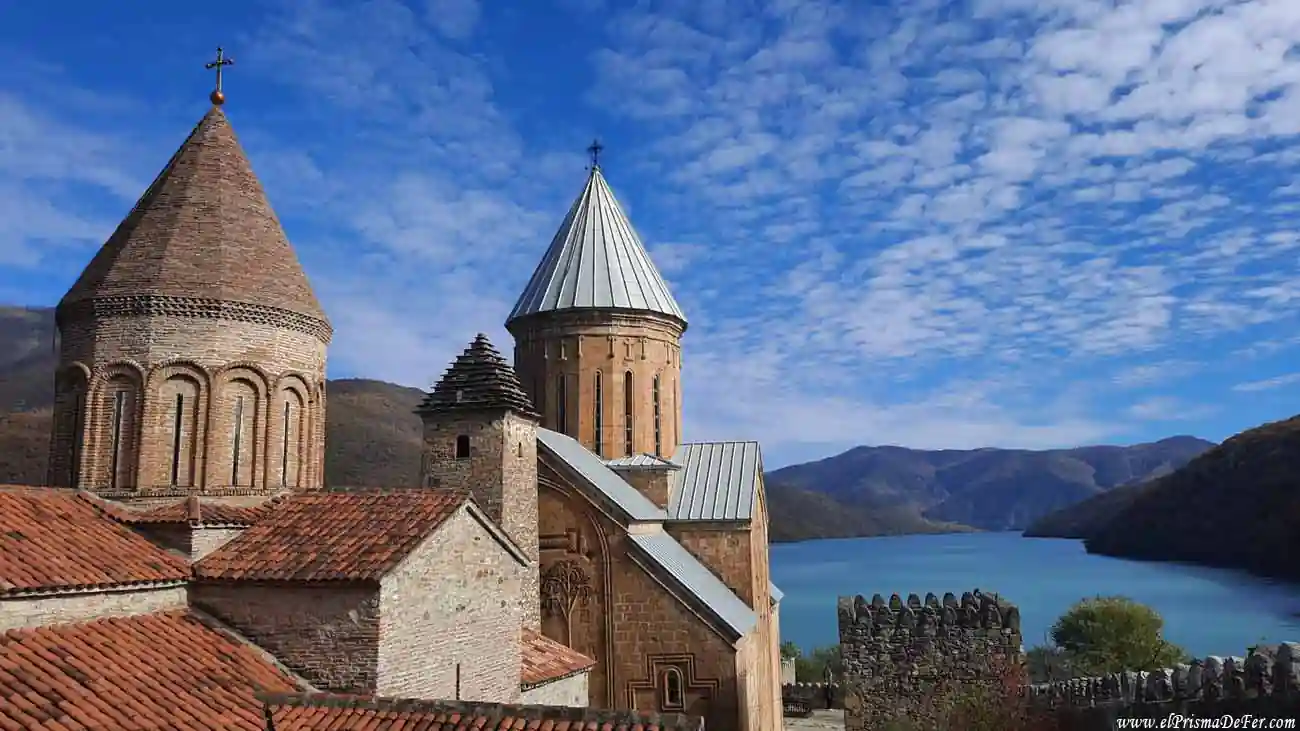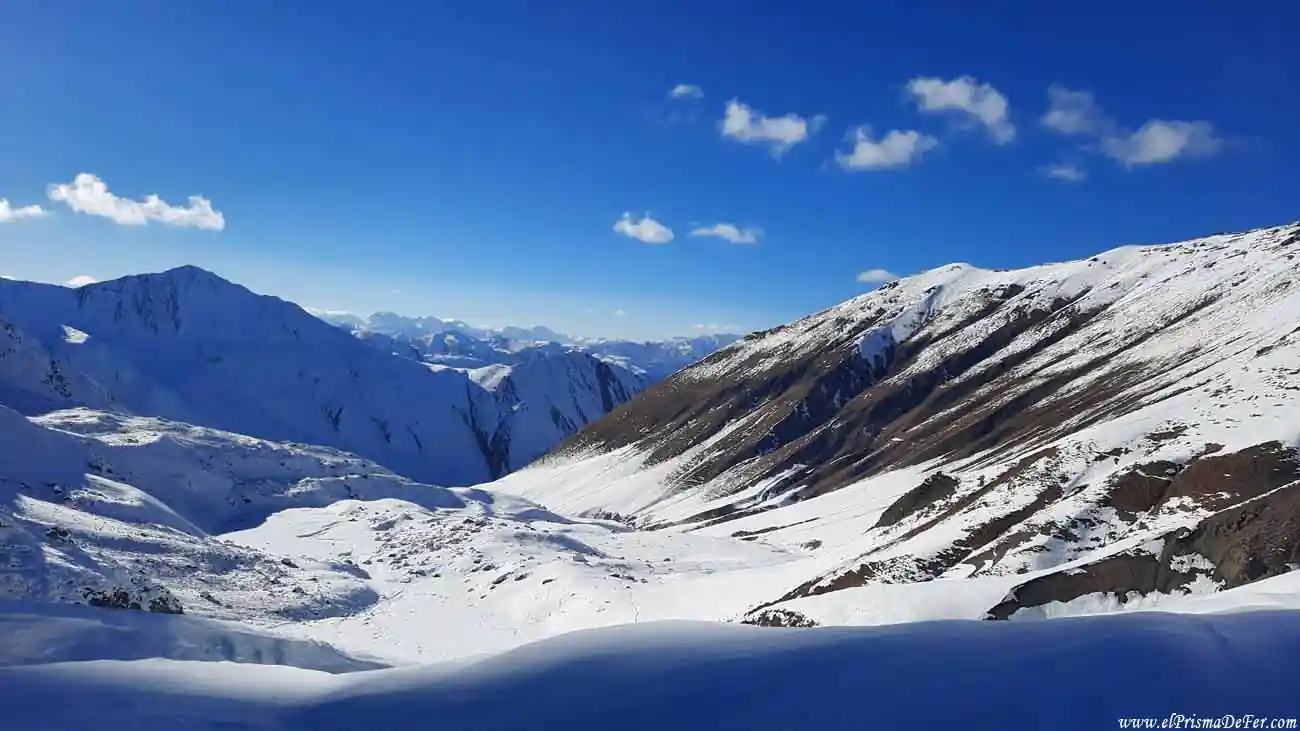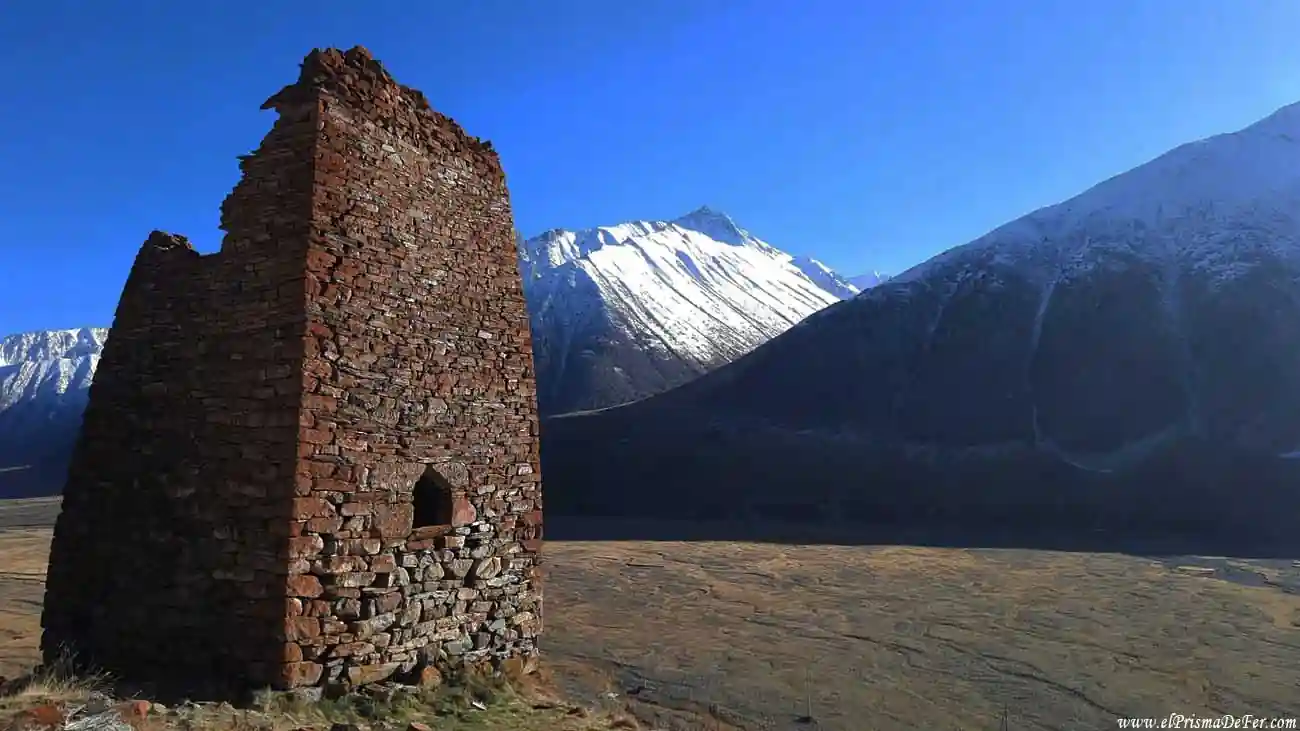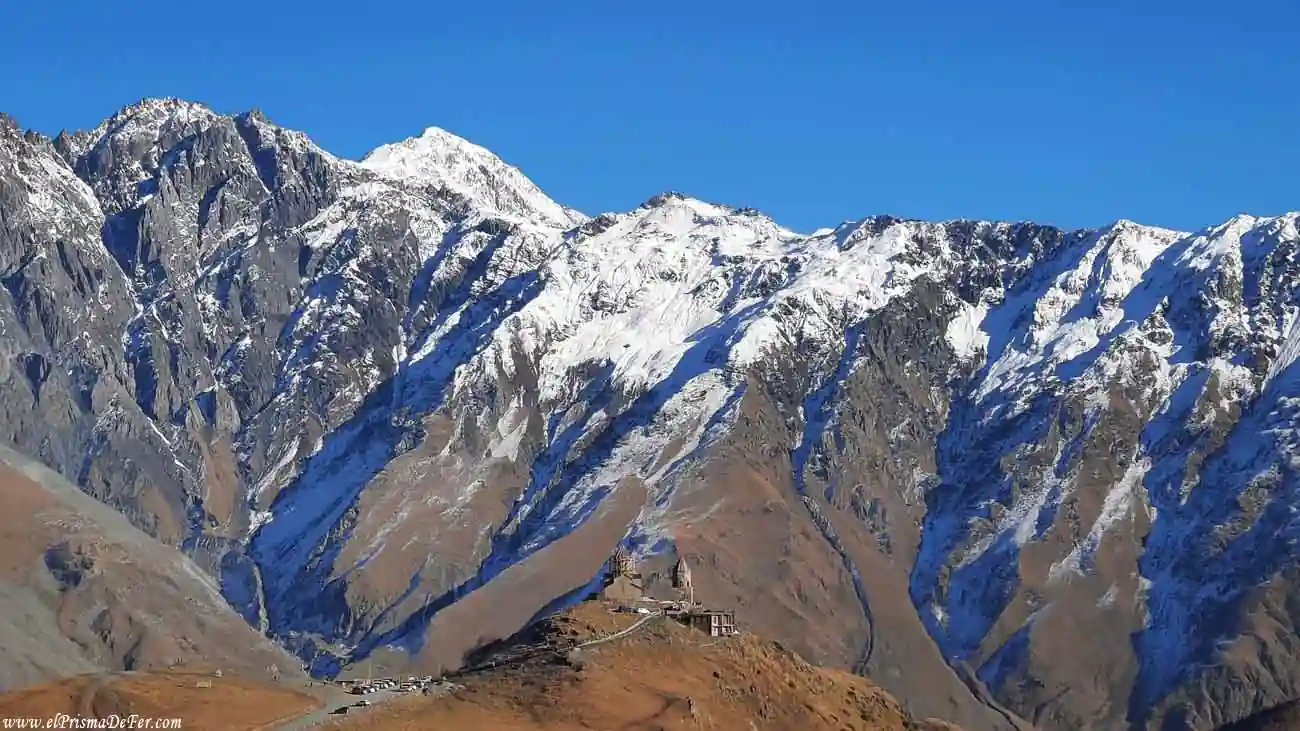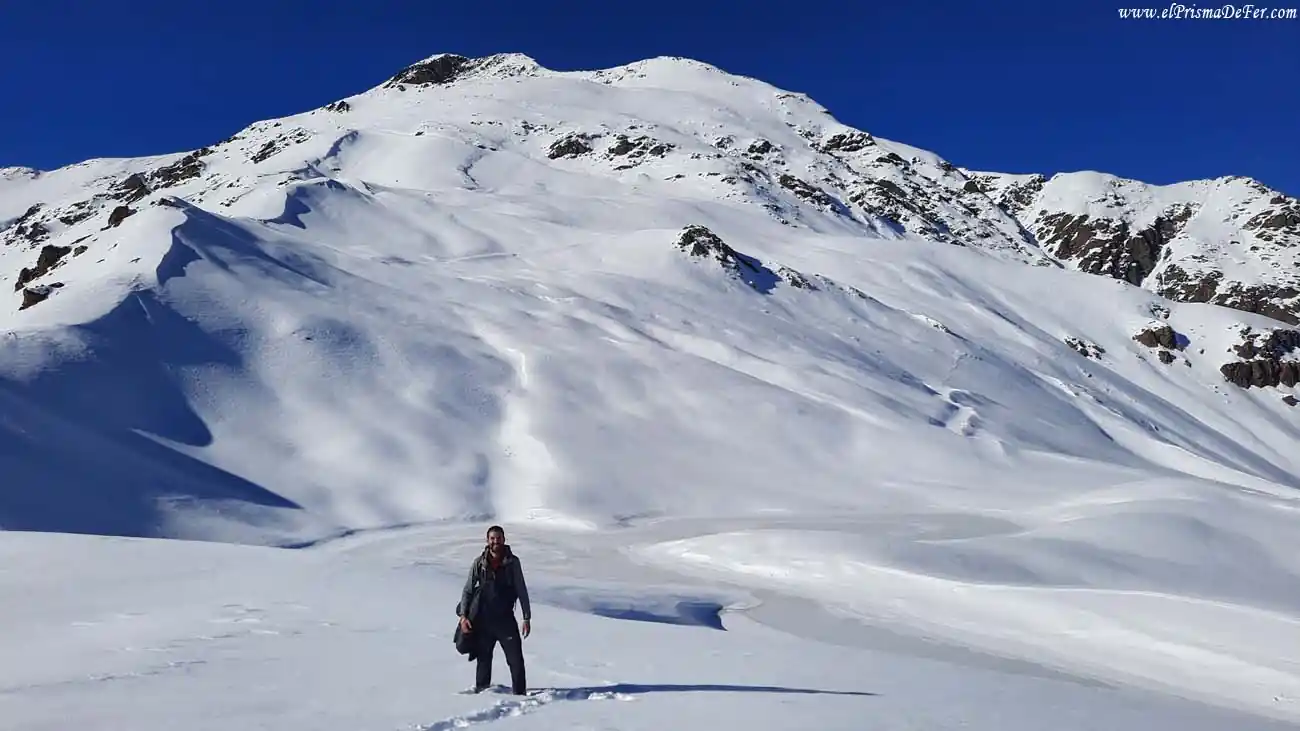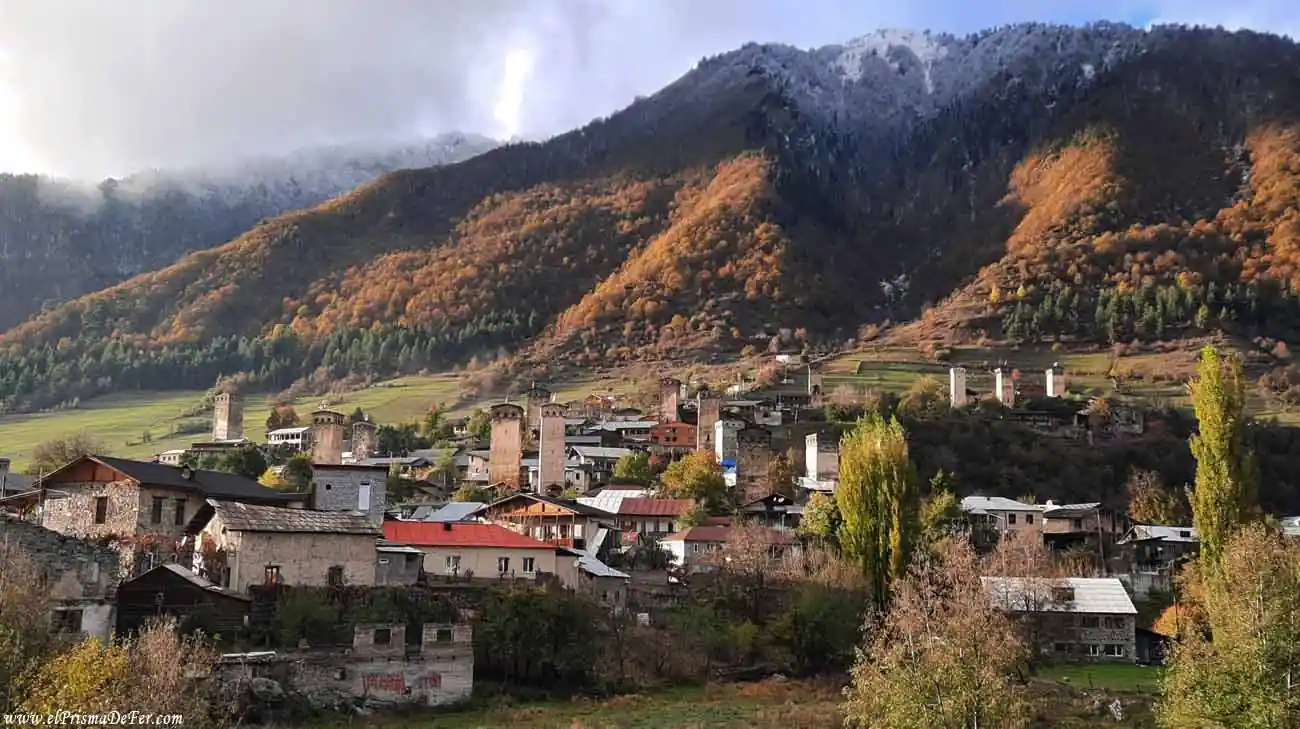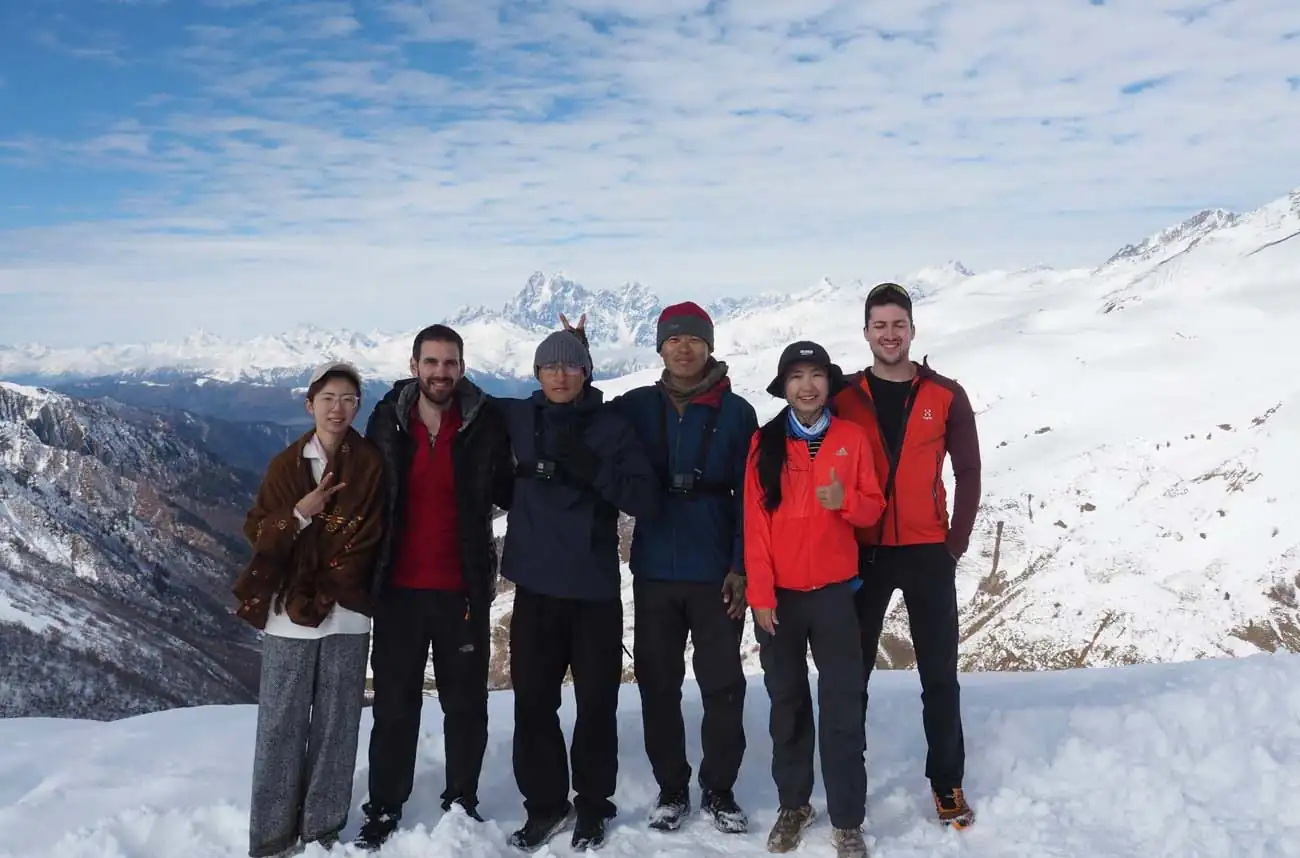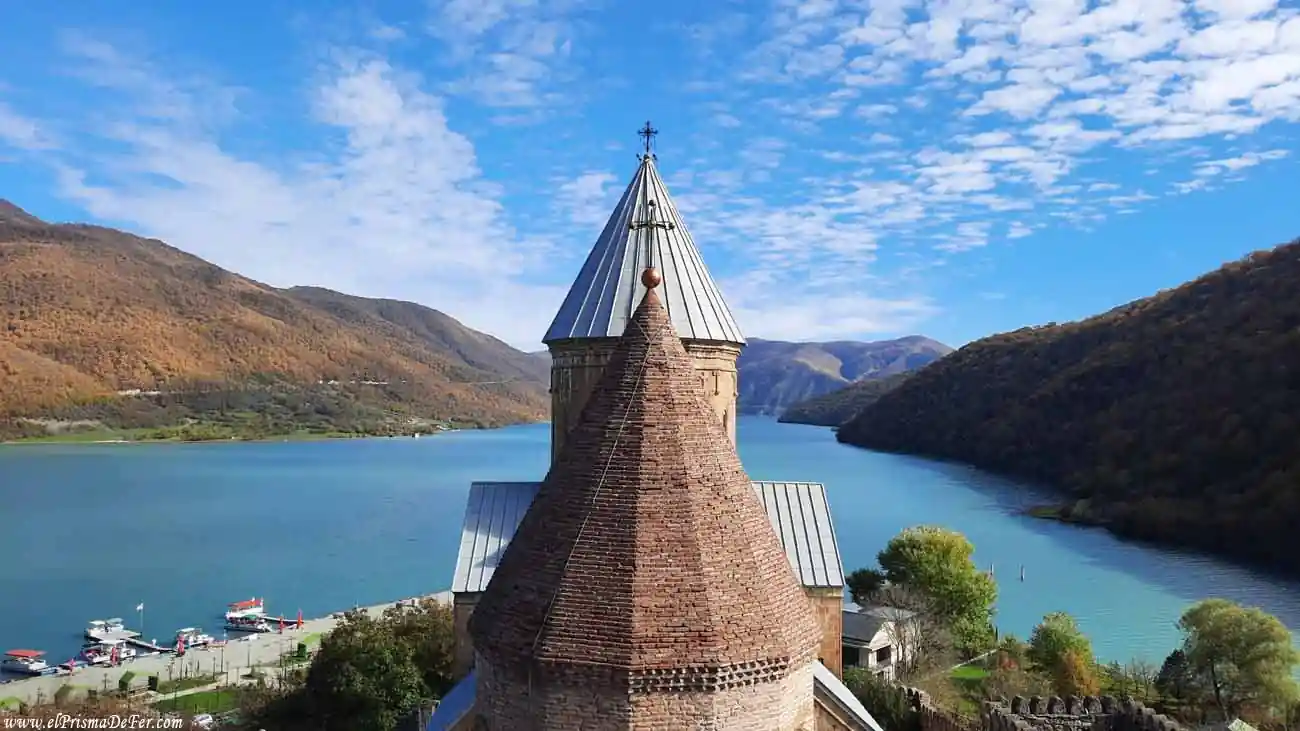Traveling to Georgia is like entering a country where Europe and Asia meet, a destination that surprised me with majestic mountains, medieval villages, and vibrant cities. From the cobblestone streets of Tbilisi, with its mix of Soviet, medieval, and modern architecture, to the snow-capped peaks of the Caucasus, this small country offers a unique diversity that captivates every traveler. Its ancient history, marked by empires, kingdoms, and trade routes, still permeates every Orthodox church, defensive tower, and local market.
Whether you're traveling the legendary Georgian Military Road, exploring the wine-growing region of Kakheti, or getting lost in the valleys of Svanetia, a trip to Georgia is an adventure that combines nature, history, and gastronomy all in one place.
In this guide, you'll find all the practical information you need to plan your trip to Georgia: how to get around by marshrutka, train, or carpool, tips on the most common routes, and recommendations for must-see places that can't be missed on your itinerary. From the modern yet bohemian capital Tbilisi, to the alpine landscapes of Kazbegi, the medieval towers of Svanetia, the vineyards of Kakheti, every corner offers a different experience.
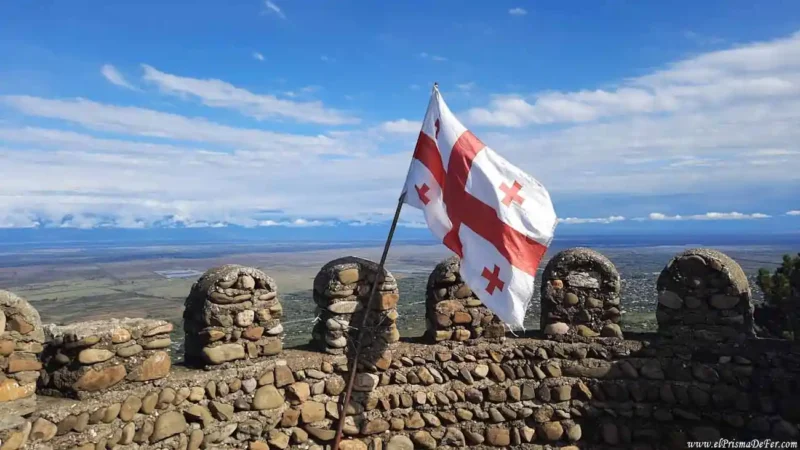

Table of Contents
What to know before traveling to Georgia
| Language 🗣️ |
| The official language is Georgian, which has its own alphabet. In urban areas, some people speak English, while Russian is more common among older generations. |
| Currency 💵 |
| The official currency is the Georgian lari (GEL). While card use is quite common in large cities like Tbilisi and Batumi, cash is still the most common currency in smaller towns, on public transport, and in local markets. |
| Religion |
| The majority of the population is of the Orthodox Christian faith (Georgian Orthodox Church). |
Location  |
| Georgia is located in the Caucasus region, between Eastern Europe and Western Asia, bordering Russia, Armenia, Azerbaijan, Türkiye and the Black Sea. |
| Capital 🏙️ |
| The capital is Tbilisi, one of the most interesting cities I visited on my trip along the Silk Road. It combines tradition, innovation and a very captivating bohemian atmosphere. |
| Visa 🛂 |
| Travelers from many countries, including the European Union and Latin America, can enter Georgia without a visa and stay for up to one year as tourists, one of the most flexible policies in the world. |

My trip to Georgia was part of a long journey along the ancient Silk Road. In this post, you can learn more about the countries I visited and how to do it all on your own.
Brief summary of the history of Georgia
Georgia's history is as ancient as it is fascinating. This small country in the Caucasus was the birthplace of some of the region's earliest civilizations and is considered the birthplace of wine, over 8,000 years ago. Over the centuries, its strategic location between Europe and Asia made it a crossroads on the Silk Road, but also a highly contested territory.
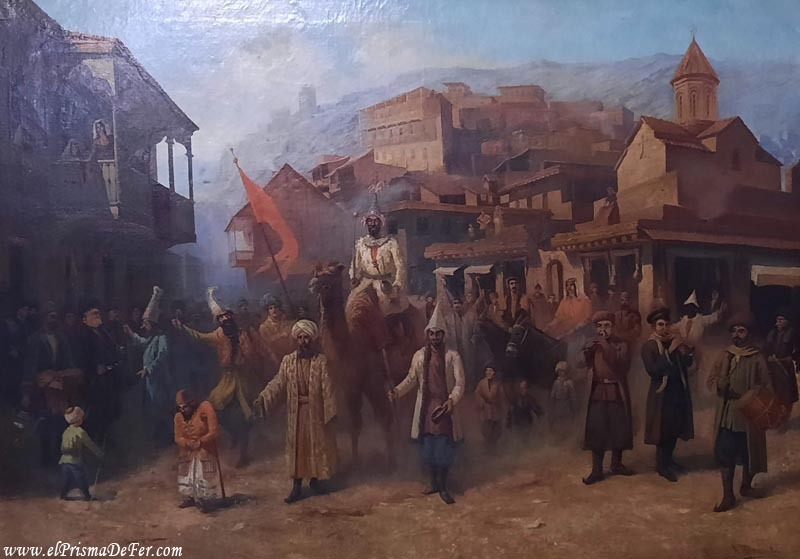
Kingdoms such as Colchis and Iberia were the first to flourish, and as early as the 4th century Georgia became one of the first countries to officially adopt Christianity, leaving a profound mark on its culture and architecture, visible in monasteries and cathedrals that still mark the landscape today.
During the Middle Ages, Georgia enjoyed its golden age under Queen Tamar, when it established itself as a powerful kingdom and flourished in the arts, literature, and the construction of fortresses and defensive towers that can still be seen in regions like Svanetia. However, in subsequent centuries, it suffered invasions by the Mongols, Persians, and Ottomans, until it fell under the rule of the Russian Empire in the 19th century.
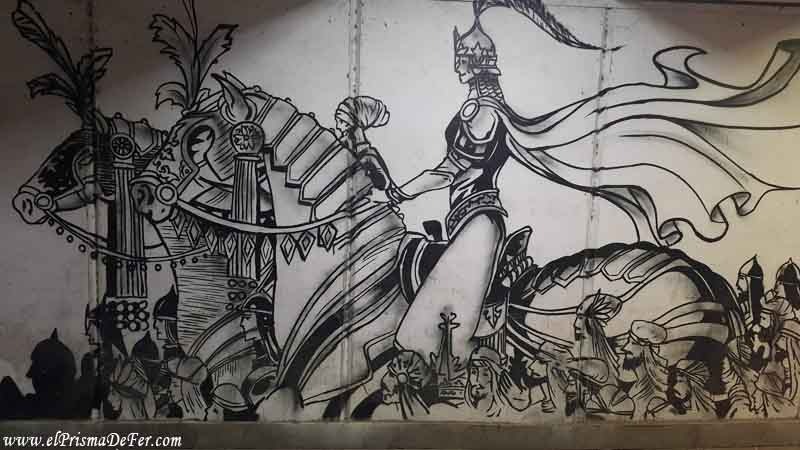
Conflict with Russia and the separatist regions of Abkhazia and South Ossetia
Already in the 20th century, Georgia became part of the Soviet Union and only regained its independence in 1991. However, its relationship with Russia remained tense and complex. Conflicts over control of the regions of Abkhazia and South Ossetia led to armed clashes between the two nations.
The turning point came in 2008, when a brief war with Russia erupted, ending with Moscow recognizing the independence of these separatist territories, something Georgia and most of the international community reject.
Today, Russia maintains troops in these areas and the border is militarized, creating a sensitive atmosphere in both Georgian politics and everyday life. As an example of the discontent felt by many Georgians, it is common to see anti-Russian graffiti or writing on the streets, openly reflecting the historical and current tensions between the two countries.

Still, Georgia has sought to draw closer to Europe and the West, and many travelers perceive in the country a resilient spirit and a strong will to look forward, without forgetting the open wounds.

Is Georgia in Europe or Asia?
One of the most frequently asked questions among travelers is which continent Georgia is on: Europe or Asia? The answer isn't so simple, because it depends on how you look at it.
Geographically, Georgia is located in the South Caucasus, a region traditionally considered the natural border between Europe and Asia. The Caucasus Mountains, along with the Black Sea and the Caspian Sea, are the most commonly used boundaries to divide the two continents, leaving Georgia in an ambiguous position.
Politically and culturally, however, Georgia identifies much more with Europe. The country is a member of the Council of Europe, has signed association agreements with the European Union, and its population generally feels part of the European world. In fact, in cities like Tbilisi and Batumi, it's very common to perceive this blend of Eastern roots with a distinctly European flair in their architecture, cuisine, and lifestyle.
In short, we could say that Georgia is a bridge country between Europe and Asia, where ancestral Caucasian traditions, Persian and Turkish influences, and at the same time a clear vocation for openness towards the West coexist.
About the Georgian Orthodox Christian religion
The predominant religion in Georgia is Georgian Orthodox Christianity, practiced by around 80% of the population. The Georgian Orthodox Church is one of the oldest in the world: it officially adopted Christianity in the 4th century, even before much of Europe. This deeply shaped the country's identity, and is reflected today in everyday life, in its countless stone churches, cliff-top monasteries, and in the religious traditions that live on in both cities and villages.

Unlike the mainstream Christianity in the West, which is usually Catholic or Protestant, the Georgian Orthodox branch retains older and more solemn rites. Services are celebrated standing, with abundant liturgical singing and no musical instruments, creating a very unique atmosphere.
Instead of three-dimensional images, Orthodox churches focus on the use of painted icons, which the faithful venerate with candles and prayers. Another difference is that the Georgian Church is not dependent on Rome, but is autocephalous, meaning independent and has its own patriarch.
Saint George, patron saint of Georgia
Saint George is the patron saint of Georgia and the object of a very special devotion. His figure appears in numerous churches, icons, and even on the national flag, where crosses inspired by him are depicted.
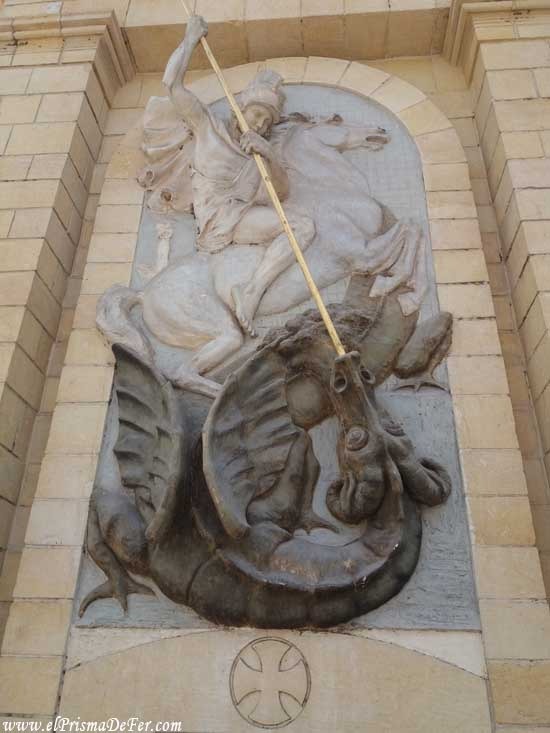
Festivals dedicated to St. George are important occasions of religious and community celebration, and his worship reflects Georgians' deep connection to Orthodox tradition and national identity.
Devotion to Saint George dates back to the 4th century, when Christianity became the kingdom's official religion. It is believed that his figure was adopted as a symbol of protection and national unity during times of invasion and conflict. To this day, churches, monasteries, and popular celebrations honor him, making him a central element of Georgian identity.
What Georgians are like
Georgians have a very distinct identity, a result of their history and their location at the crossroads of Europe and Asia. Physically, they tend to have Caucasian features: light to dark skin, dark hair, and eyes ranging from brown to green. Many men wear beards and have a robust build, while women tend to stand out for their fine, elegant features. In mountainous regions, such as Svanetia, differences are still noticeable in traditional dress and in certain traits inherited from more isolated communities.
In terms of personality, Georgians may not seem as open at first glance as those in other countries in the region. The older generations tend to display a certain seriousness or coldness, especially with foreigners, which is sometimes interpreted as distance. However, in everyday conversations, once trust is established, a straightforward nature emerges, proud of their roots, and with a strong sense of community.
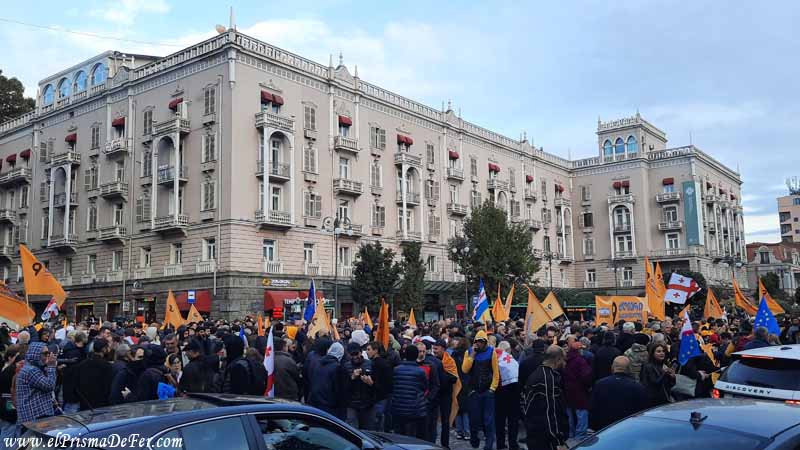
Among young people, on the other hand, it's more common to find a welcoming attitude, a curiosity for travelers, and a more modern outlook, especially in Tbilisi or Batumi. Georgia is a country where first impressions can be a bit harsh, but with time and patience, you can discover very interesting nuances in its people.
How to get around Georgia
Getting around Georgia is part of the adventure, as transportation reflects much of local life. One of the most common methods is the marshrutkas, shared minibuses that connect virtually every city and town in the country. They don't usually have strict schedules: they leave when they're full, they're fairly affordable, and although they can be somewhat uncomfortable on long trips, they're the best option for reaching more remote destinations.
Another comfortable and economical alternative is the trains, which connect the main cities such as Tbilisi, Batumi, Kutaisi and Zugdidi among others. While not the fastest, night trains allow you to save a night's accommodation and travel more comfortably than on a marshrutka. Tickets can be purchased online from the Georgian Railways official website
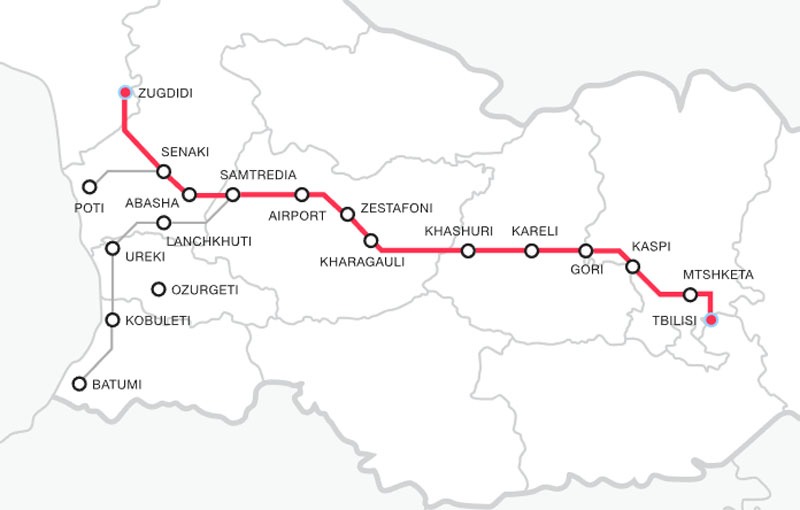
Finally, many travelers opt for car sharing or renting, especially if they plan to explore mountainous regions like Kazbegi or Svanetia, where public transport schedules can be difficult.

Some curiosities about Georgia
The Georgian alphabet
Georgia has its own alphabet, unique in the world and with over 1,500 years of history. It is called mkhedruli and, unlike other Caucasian languages, it is not similar to Cyrillic or Latin. It's composed of 33 letters, and its curved, elegant script gives it an almost artistic feel.
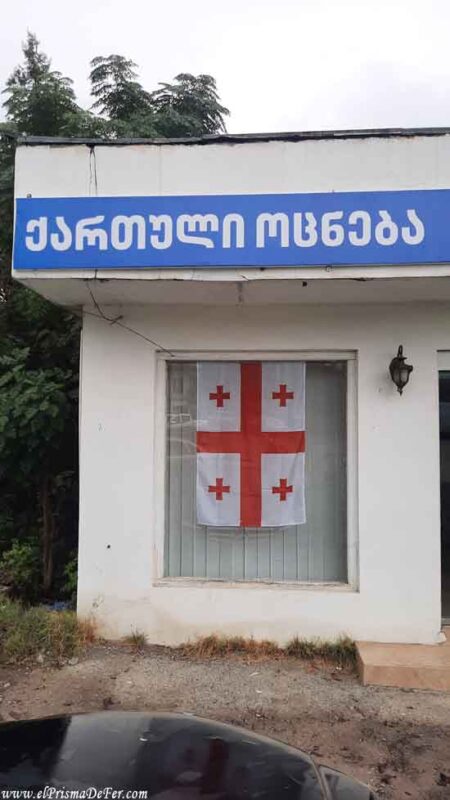
The origin of wine
Archaeologists have found traces of wine production in Georgia dating back more than 8,000 years, making the country the birthplace of this drink. The traditional technique, which is still preserved, consists of fermenting the grapes in large clay jars called qvevri, buried underground.

The myth of the Golden Fleece
The region of Colchis, on the Black Sea coast, was the setting for one of the most famous Greek myths: that of Jason and the Argonauts in search of the Golden Fleece. According to historians, this myth could be related to ancient local techniques of obtaining gold using sheepskins in rivers.
Tbilisi and its hot springs
The name of the capital, Tbilisi, comes from the Georgian word tbili, which means “warm,” referring to the sulfurous hot springs that can still be enjoyed today in the famous baths in the Abanotubani neighborhood.
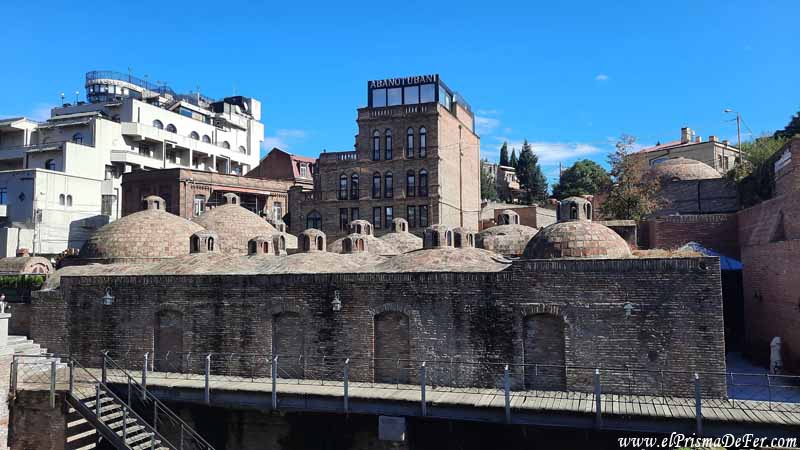
Towers of Svanetia
In the mountainous region of Svanetia there are medieval defensive towers dating from the 9th century onwards. These structures, which served as refuge during invasions, are today a symbol of Georgian identity and a UNESCO World Heritage Site.
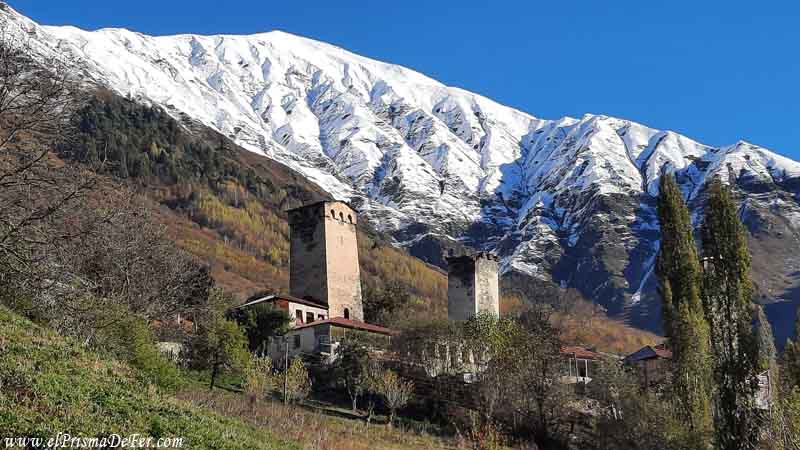
The figure of Stalin and Georgia
Although he was born in Gori in 1878, Joseph Stalin remains an uncomfortable figure in Georgia's collective memory. Many Georgians don't identify with him and consider him a wound in their history, despite the fact that his hometown still has a museum dedicated to his life and some merchandise featuring the former Soviet leader is sold in tourist attractions.
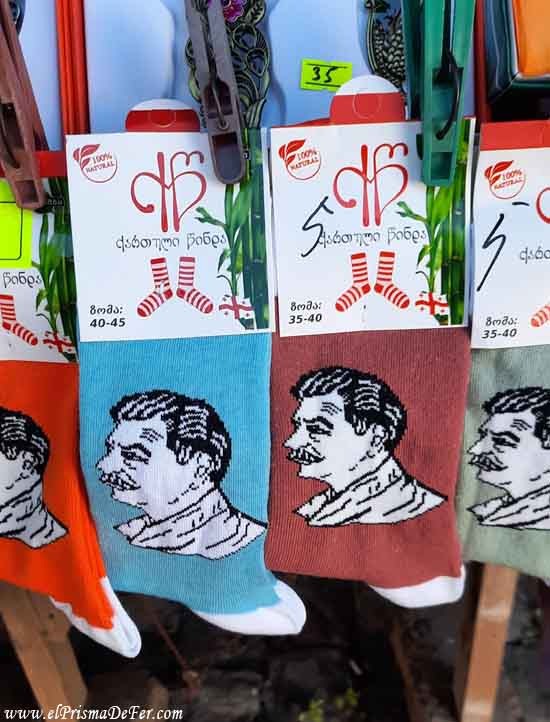
Land of fighters and boxers
Georgia has a long tradition in combat sports. Wrestling is practically a national sport, and many young people practice it from a young age, which has led the country to excel in international championships and leagues, such as the UFC. This fighting spirit is viewed with pride by Georgians, who celebrate their athletes as symbols of discipline and strength.
The flag of Georgia
The current flag of Georgia, known as the Flag of the Five Crosses, was adopted in 2004 but has medieval origins. In the center is a large red cross on a white background, and a smaller cross appears in each of the four quadrants. It is believed to have been used by the Kingdom of Georgia during the Middle Ages and is associated with the country's golden age under Queen Tamar. Today it symbolizes unity, the Christian faith, and national rebirth after the Soviet years.
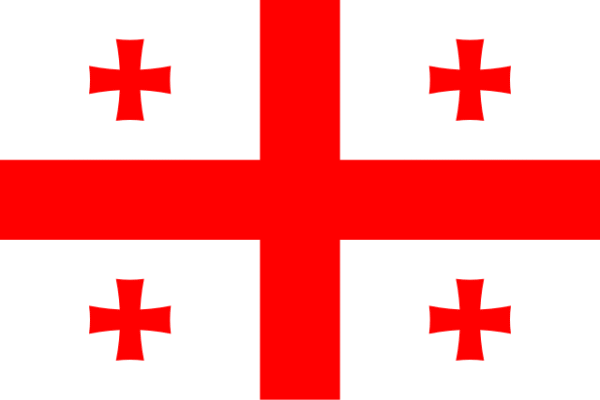

What is it like to trek in Georgia?
Trekking in Georgia is one of the best experiences the country has to offer, and the one I enjoyed the most. The landscape is dominated by the Caucasus , one of the most spectacular mountain ranges in the world, with deep valleys, glaciers, and medieval villages that seem frozen in time.
Unlike other mountain destinations, in Georgia the trails pass through inhabited villages, allowing you to combine nature with local culture. The weather can be changeable and the distances challenging, but the effort is always rewarded with unforgettable views.
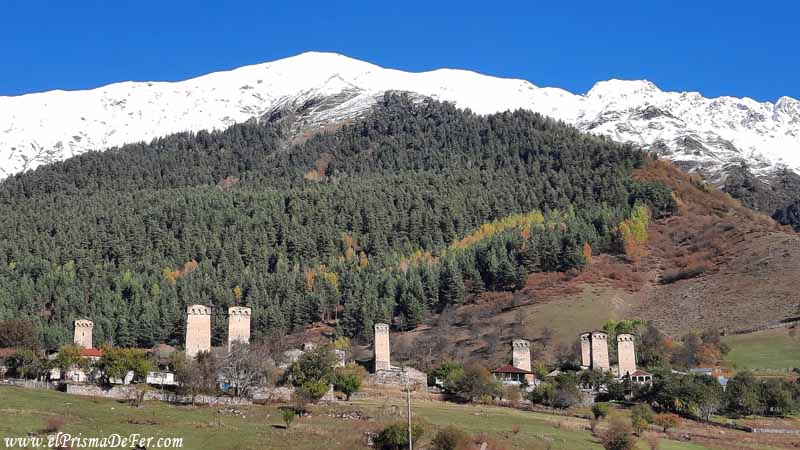
The star region for trekking lovers is Svanetia, in the northwest of the country. Several routes depart from Mestia, the most famous being the multi-day hike to Ushguli, considered the highest inhabited village in Europe.
Along the way, you'll cross glaciers, alpine meadows, and medieval towers that look like they're from another century. It's a challenging trek, but very well marked, with accommodations in almost every village, making it accessible even without a tent.
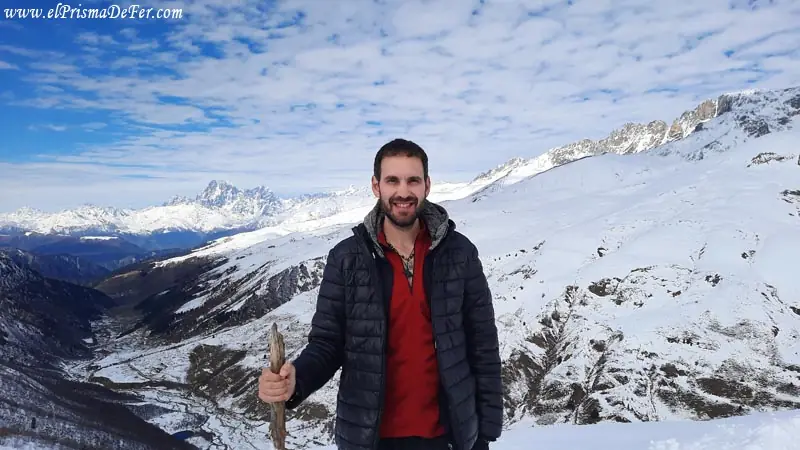
Another trekking option in Mestia, shorter than the long trek to Ushguli, is the climb to the Koruldi Lakes. The trail takes less time but still offers spectacular views of the Caucasus and the snow-capped mountains surrounding the region. From the top, the landscape is breathtaking and makes every step worthwhile, especially when you see it covered in snow.
On the other hand, Kazbegi offers shorter but equally impressive options. The classic is to climb the Gergeti Trinity Church, with the imposing Mount Kazbek (5,047 m) as a backdrop. From there, you can take day hikes to the Gergeti Glacier, the Gveleti Waterfalls, or nearby valleys such as Juta and Truso. It's an ideal area for those looking for shorter hikes without straying too far from Tbilisi.
In addition to these regions, places like Tusheti, Racha, or Borjomi-Kharagauli offer lesser-known trails, perfect for those with more time and looking for off-the-beaten-path experiences.
In all cases, trekking in Georgia combines adventure, unspoiled nature, and the chance to discover villages where life goes on much the same as it did centuries ago.

Map with the travel itinerary in Georgia
What to see and do in Georgia
Georgia is a small country, but enormous in diversity. From the snow-capped peaks of the Caucasus to the beaches of the Black Sea, passing through cities steeped in history, ancient monasteries, and villages tucked away in green valleys, there's always something new to discover.
In this section, I'll tell you what to do in Georgia, with my experiences and recommendations so you can plan your own tour of this fascinating country.
Tbilisi, the vibrant capital
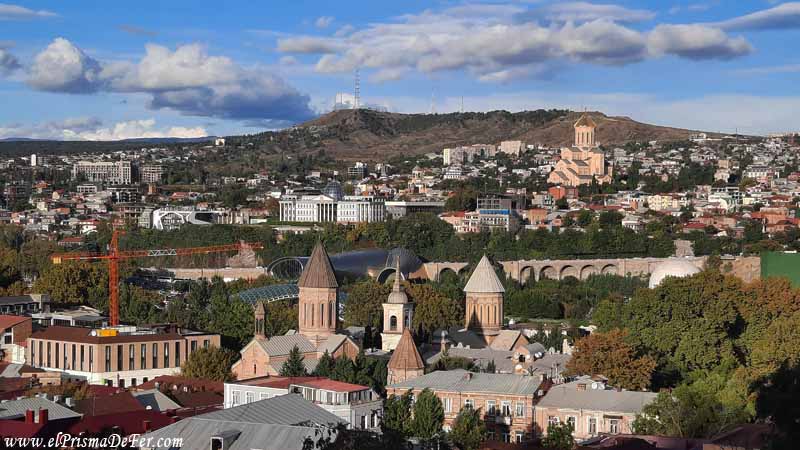
Georgia's capital is the gateway to the country and a place worth spending several days in. Its ancient streets, carved wooden balconies, and sulfur baths in the Abanotubani neighborhood give it a unique charm.
Tbilisi is home to Orthodox churches, mosques, and synagogues, alongside modern cafes, alternative bars, and street murals. Climbing the Narikala fortress at sunset or getting lost in the Old Town are must-sees.
Svanetia and the medieval towers
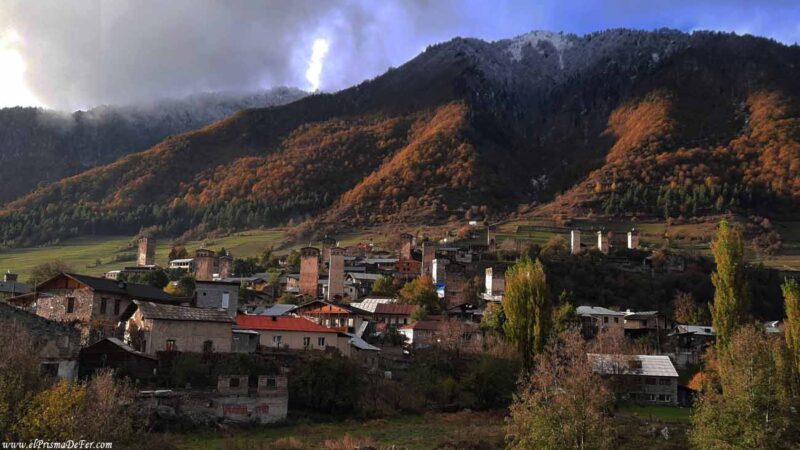
Nestled in the Caucasus Mountains, Svanetia is one of the most authentic and spectacular regions in the country.
Its alpine landscapes are dotted with medieval villages with stone defensive towers, many of them World Heritage Sites.
The village of Mestia is usually the base for exploring the area, but the most special thing is to trek to Ushguli (you can also go by car), considered one of the highest inhabited villages in Europe.
Kazbegi and the Caucasus Mountains
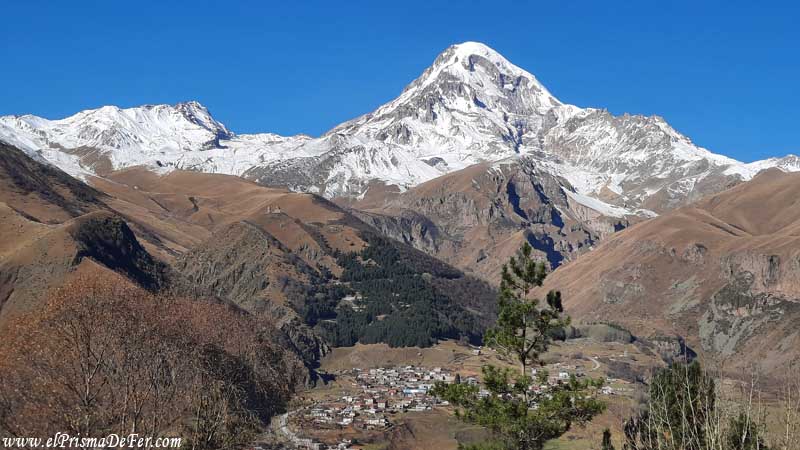
The Kazbegi region (officially Stepantsminda) is famous for the iconic Gergeti Trinity Church, located high on a hill with Mount Kazbek as a backdrop.
It's another paradise for hiking enthusiasts, with trails leading to glaciers, waterfalls, and green valleys, such as the Truso Valley and the Juta Valley, two visits that are often included when visiting this region.
The road to get there from Tbilisi, the Georgian Military Route, is a spectacle in itself.
Kakheti, the land of wine
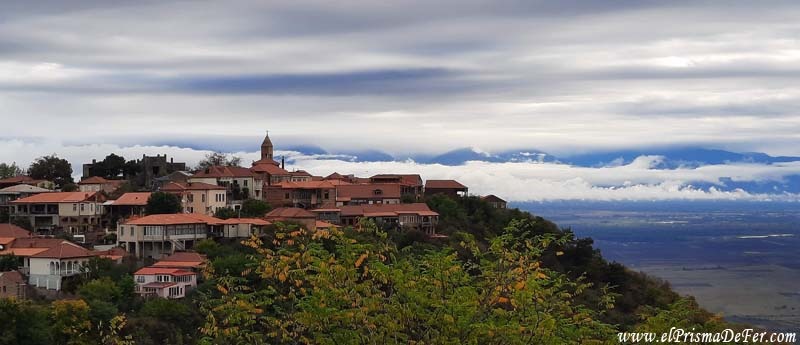
In the east of the country lies Kakheti, the wine-growing region par excellence. Here you can visit family wineries, taste wines made in qvevri (buried clay jars), and explore monasteries such as Alaverdi or the walled city of Signagi, overlooking the Alazani Valley.
It's the ideal place to relax, enjoy the cuisine, and understand why Georgia is considered the birthplace of wine.
Batumi and the Black Sea
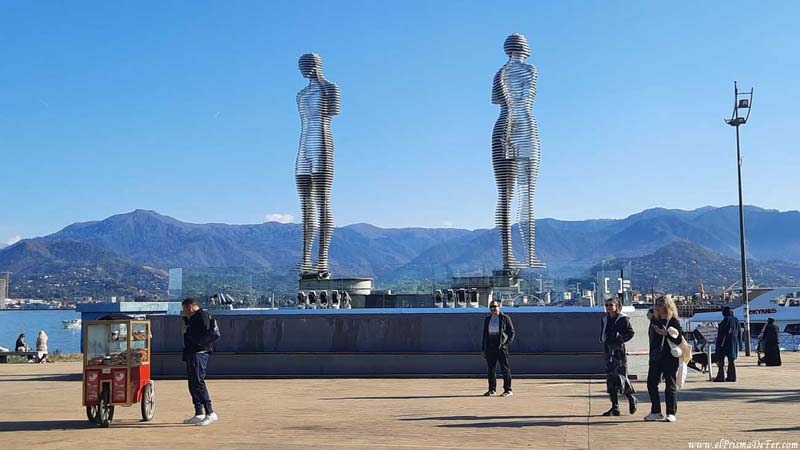
In contrast to the mountains, on the Black Sea coast lies Batumi, a modern city with a completely different feel.
Its beaches, coastal boulevard, casinos, and futuristic architecture coexist with traditional neighborhoods and a lively central market. It's the country's most popular summer destination, very popular with Georgians and tourists from neighboring countries, especially Turkey.
Vardzia, the city in the caves

In southern Georgia lies Vardzia, an impressive monastic complex carved into the rock in the 12th century. It once had up to 6,000 rooms spread over several levels, connected by tunnels and secret passages. Today, you can explore part of the complex and enjoy views of the Mtkvari River valley.
Kutaisi, the historic rival of Tbilisi
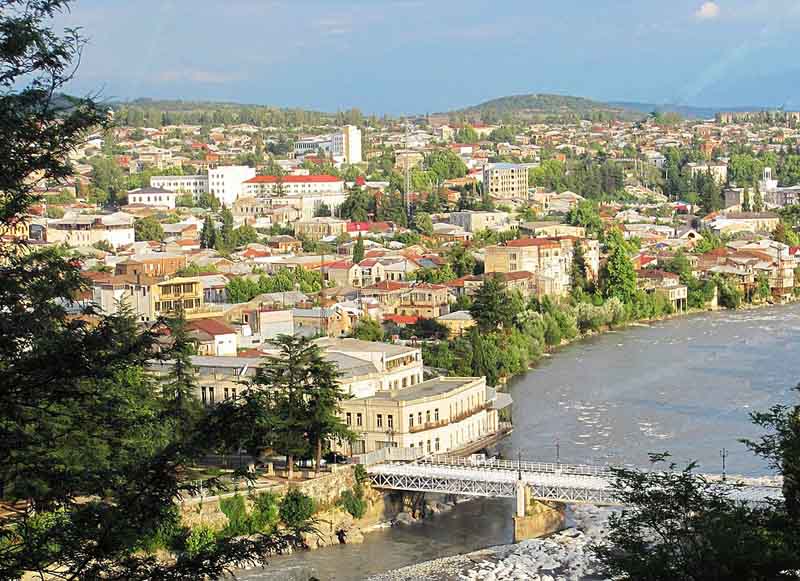
Kutaisi, the second largest city in the country, was once the capital of Georgian kingdoms. Today it is a quiet town, with monasteries such as Gelati (World Heritage Site) and caves in its surroundings, such as Prometheus and Sataplia, where dinosaur footprints are preserved. It's also a popular entry point thanks to its low-cost airport.
Tusheti, the remote jewel
Tusheti is one of the most isolated regions in Georgia, accessible only during the summer months. Its stone villages and defensive towers seem frozen in time, surrounded by pristine landscapes that attract trekking and wilderness enthusiasts.
Uplistsikhe, the rock-cut village
Located a short distance from Stalin's hometown of Gori, Uplistsikhe is one of the oldest settlements in Georgia. Carved from volcanic rock, it combines dwellings, pagan temples, and secret tunnels, allowing you to imagine how its inhabitants lived thousands of years ago.
Organized activities in Georgia

Border crossing in Georgia
Georgia shares borders with Russia, Armenia, Azerbaijan, and Turkey, although not all are open to travelers. The political situation in the region means some border crossings are restricted, especially in the separatist areas of Abkhazia and South Ossetia.
With Russia, the only open border crossing is the Kazbegi – Verkhni Lars crossing, on the Georgian Military Route, which connects Tbilisi with Vladikavkaz (North Ossetia, Russia). It is widely used by both locals and travelers, although it can be congested during peak season or even temporarily closed due to bad weather in winter.
There are several crossings with Armenia, the most frequently used being Sadakhlo – Bagratashen (on the way to Yerevan from Tbilisi) and Ninotsminda – Bavra (ideal if you're heading to Gyumri). The crossings are relatively simple and usually uncomplicated.
With Azerbaijan there are official border crossings such as Red Bridge – Krasny Most and Lagodekhi – Balakan, but it is important to know that today (2025) tourists cannot enter Azerbaijan by land from Georgia. Entry is only permitted on international flights, while crossings from Azerbaijan to Georgia are possible by road. Therefore, if your route includes Azerbaijan, it's a good idea to plan ahead and always check current regulations.
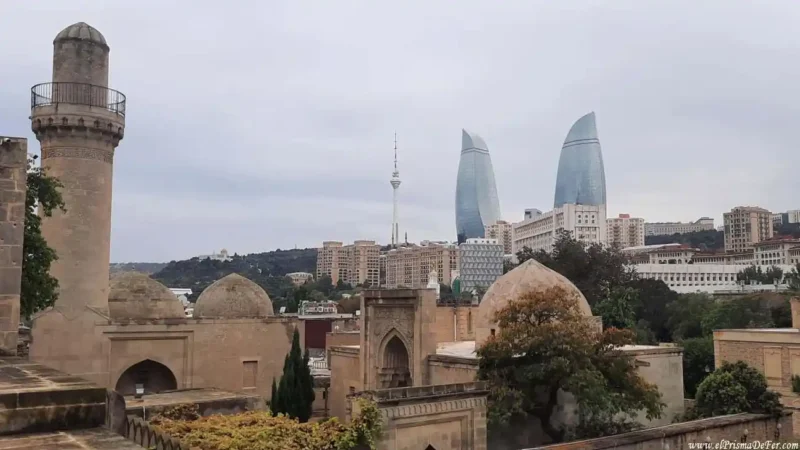
Coming soon: Guide to traveling in Azerbaijan
Finally, with Türkiye the most used crossings are Sarpi, on the Black Sea coast near Batumi, and Vale – Türkgözü, further south. Sarpi is very busy in summer, as it directly connects the Ajara region with Turkey's Black Sea coast.
Typical Georgian food
Georgian cuisine is one of the highlights of the trip. Thanks to its location between Europe and Asia, the cuisine combines influences from the Middle East, the Mediterranean, and local traditions, resulting in unique and delicious dishes.
The most famous is khachapuri, a type of bread filled with cheese, which has many variations depending on the region: Adjaruli, shaped like a small boat with an egg on top, is probably the best known.

Another classic is khinkali, large ravioli filled with meat (or sometimes vegetables and cheese), which are eaten with the hands, first sipping the broth inside.
There are also dishes such as lobio (bean stew served with bread and pickles), badrijani nigvzit (eggplant rolls with walnut paste), and mtsvadi, a Caucasian-style roasted meat skewer.
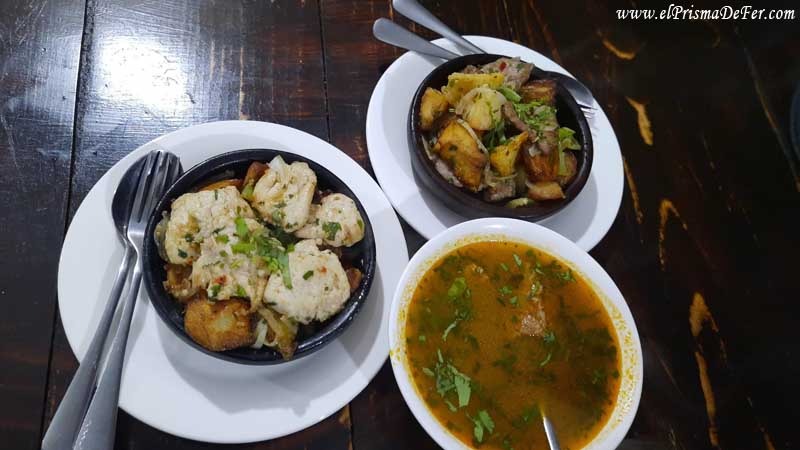
The presence of fresh herbs, walnuts, and pomegranates is also very important in many dishes, giving Georgian cuisine a fresh and aromatic character.
To accompany it, you can't miss wine, since Georgia is considered the birthplace of this drink: tasting a wine made in qvevri (earthenware jars) is a cultural experience in itself.
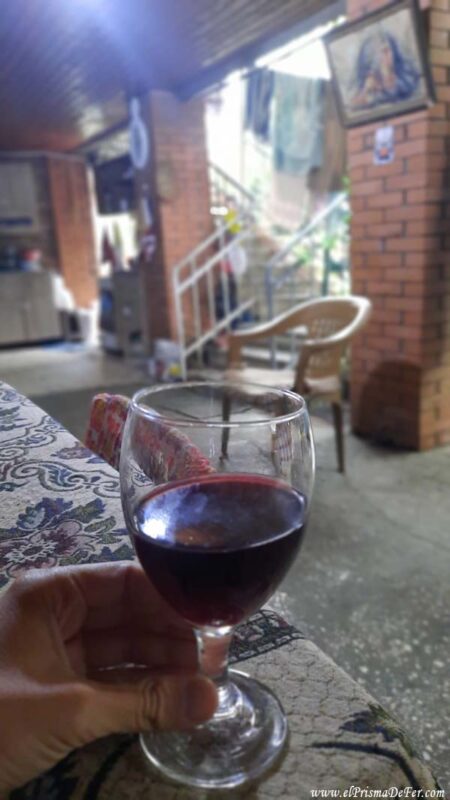

Security in Georgia
Overall, Georgia is a fairly safe country for travelers. The crime rate is low, and it's common to walk around safely, even at night, in cities like Tbilisi or Kutaisi. Robberies and scams targeting tourists are rare, although, as with any other country, it's a good idea to take basic precautions: keep an eye on your belongings on public transportation, don't leave things unattended, and be alert in crowded areas.
Where you do have to be more careful is in traffic and on the roads. Georgian drivers tend to be reckless, mountain routes can be dangerous, and the condition of some roads, especially in regions like Svaneti and Tusheti, requires caution.
Best time to travel to Georgia
The best time to visit Georgia depends on the type of trip you're looking for. Spring (April-June) and Autumn (September-October) are ideal for exploring the country: pleasant temperatures, clear skies, and green landscapes or those tinged with autumnal colors. Plus, in autumn, the harvest season takes place in Kakheti, one of the most authentic cultural experiences you can have.
Summer (July-August) is hot in cities like Tbilisi and Batumi, but perfect for those looking to trek in the Caucasus Mountains. However, Winter (December-February) brings abundant snow to areas like Gudauri and Mestia, attracting ski enthusiasts. Georgia is a year-round destination, but if you're looking to combine culture, nature, and good weather, spring and autumn are the best times.
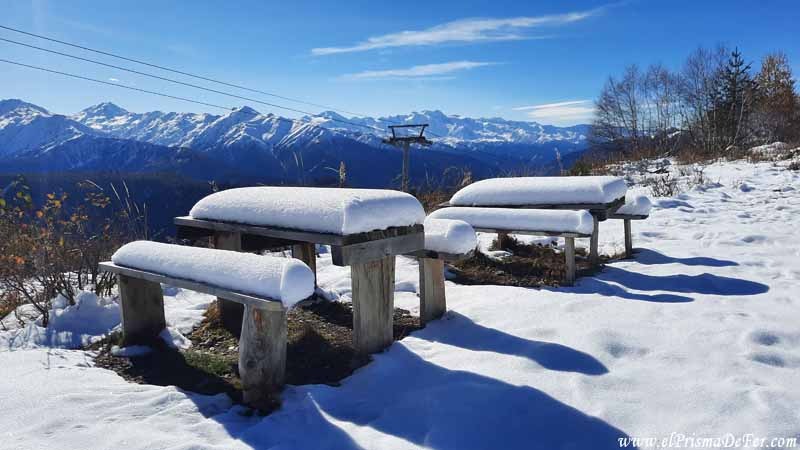
Is it expensive to travel to Georgia?
Georgia tends to be a fairly affordable destination compared to Europe, making it an attractive country for backpackers. Public transportation, especially marshrutkas and trains, is very cheap, and eating at local restaurants costs a fraction of what you'd pay in the West. Sleeping in hostels or guesthouses is also affordable, and there are always more comfortable, affordable options for those who prefer hotels.
What can make the trip more expensive are private excursions, especially in mountain regions where public transportation is limited and sometimes you have to pay for jeeps or shared transfers. Still, if you travel independently, eat locally, and use public transportation, Georgia is a country where you can live on a backpacker budget of 20 to 35 euros per day without any problems.
SIM card and internet connection
Getting a local SIM card in Georgia is very easy and cheap. As soon as you arrive at Tbilisi airport or in any major city, you will find booths for companies like Magti, Geocell or Beeline. Prepaid plans include plenty of data for affordable prices (from 5 to 10 euros), making staying connected throughout the country effortless.
As for coverage, the signal is good in cities and main roads, although it can become unstable in very remote mountainous areas such as Tusheti or Svanetia. If you plan to spend time in these areas, it's best to inform your accommodation in advance, as you may be disconnected.
Which eSIM to use in Georgia
If you don't want to go through the hassle of finding a traditional SIM card as soon as you arrive in Georgia, an excellent alternative is to use an eSIM. With this system, you can activate mobile data from your phone before traveling, without having to go to a store or change your physical card.
For those planning to travel around the country, I recommend using Airalo, as it offers cheaper plans than other companies and has coverage throughout Georgia, even in less touristy areas.
Additionally, if you buy the Georgia eSIM through my link you can access a 15% discount if it's your first purchase (Code: NEWTOAIRALO15), or 10% if you've used the platform before (Code: AIRALOESIM10).
If you want to better understand how eSIMs work, their advantages, how to check if your phone is compatible and how to use the codes, I invite you to read the full post I wrote on the topic.
How many days to stay in Georgia
The number of days you spend in Georgia will depend on the type of trip you want to take and the regions that interest you most. I was there for a little over three weeks and that gave me the opportunity to travel around various parts of the country: from Tbilisi to the mountains of Kazbegi and Svanetia, passing through the wine-growing region of Kakheti and reaching the Black Sea coast in Batumi. In that time, I was able to get a fairly comprehensive overview, although there are always corners left to discover.
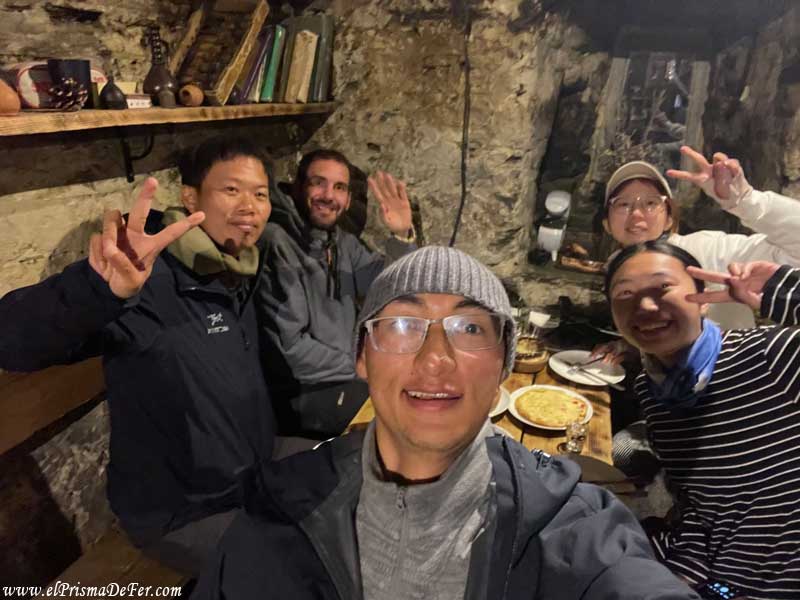
If you don't have that much time, with one week you can put together an itinerary that combines Tbilisi, a trip to Kazbegi, and perhaps a couple of days in the wine country or Batumi. With two weeks it is already possible to also include Svanetia and Kutaisi, adding nature, history and some beach.
And if you have more than three weeks, you can explore more remote regions like Tusheti or travel slowly, enjoying the calm of the villages and the local hospitality. Georgia is a small country, but with such great diversity that it can fit into any itinerary.
Support The Prism of Fer!
Your support helps me continue creating free content on the blog. Thank you so much!


